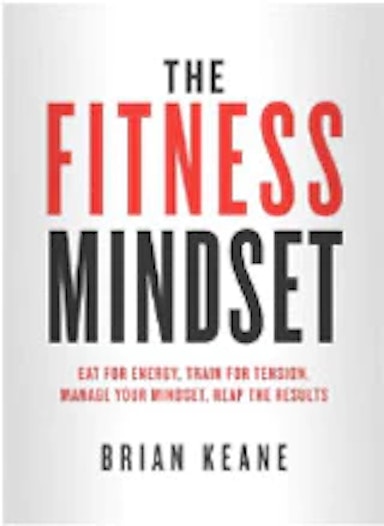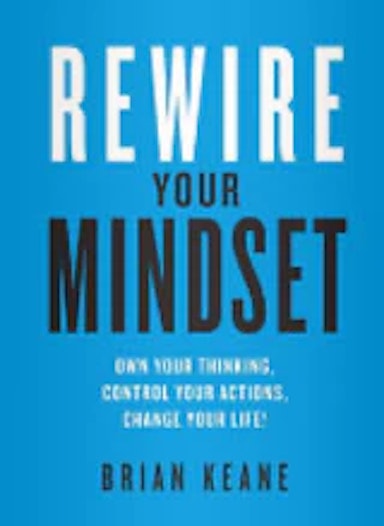Don’t Price Your Personal Training Service Like Milk Or Bread
- By Brian Keane
If you have ever asked yourself the question “am I charging too much? “ or “I don’t think I’m charging enough?” then read on.
Personally, I don’t think I’ve ever done a single business consultation where this topic didn’t come up in some form or another. Pricing can be difficult.
Marketing is relatively easy, you find out where peoples’ attention is and put your service in front of them. That or you lead with up front value in the form of informative content and build up your trust equity. Advertising is a little trickier but when it comes down to it, it’s the same as marketing; the only real difference is that it has the return on investment i.e. every euro you spend on advertising should be making you at least two euro back.
Pricing on the other hand can be a little more difficult. One of the reasons its difficult is because trainers regularly fail to see their worth and price accordingly or they do see their worth and are afraid to ask for it. The way I generally get the people over this is by what I call ‘supply and demand pricing’ – I mentioned this briefly in my free book ‘How To Move Your Personal Training Business Online’ but I’ll expand on it here.
The supply and demand pricing means that your price goes up as your demand increases. For example if you build up to a full client roster (20-40 sessions a week) and now you’re at capacity, then it’s a sign that your price needs to increase for any new clients (price increases for current clients is a whole topic in itself). I’m going to be going into this in much more detail at my full day business seminar as I’ll be able to give specific advice on how to apply this based on your current situation, market and demographic. For now, knowing that when you have a quality service where supply starts to exceed demand, its time for a price increase. As I said, that strategy tends to be more personalised based on your specific business model but there are a few other things worth knowing regardless of what stage your business is in.
1. People Buy On Value, Not On Price
People generally don’t buy based on price, they buy (consciously or subconsciously) off of value they expect to receive. If you charge €300 for ten 1:1 sessions for example and your client agrees to pay that, they are hoping that the service you provide is at €300 worth of value (or more ideally). The reason I charge between €250 and €500 for 1-2 hour Business Skype Consultations is because I know I’m providing significantly more than that in value. I also know who my market is (see next point) and vet people before hand to make sure that I can provide that value. If someone is just starting off asks for consultation, I generally tell him or her it’s too early. For example, I had a guy pay for a one-hour Skype call at the end of the summer and he was way too early for it. He had just started his PT course and wouldn’t be qualified for another six months! I obviously respected his drive to cut his learning curve (which tells me that he’s probably going to make it when he does qualify) but I refunded him his money. I followed up with three book recommendations (The E-Myth Revisited, The Lean Start Up and Essentialism) and told him to come back to me in 6-12 months if he still wanted to do a consultation.
I sell that business consultations to personal trainers who are already established and need that nugget or two of gold to move their business to the next level. When you know who your market is, it’s easy to provide the value to them at the most effective price. When pricing you should always aim for win win. You should be happy with the price you received and the person who bought from you should think it was a steal. That or you should do it because you love it and feel it gives you a higher purpose. For example, the reason I run business seminars and work with personal trainers isn’t for the money (although it’s a nice bonus)- but in truth, my fitness business, book royalties and speaking appearances make more than enough to keep me going but working with personal trainers allows me to help more people on a grander scale. If I work with 50-100 clients a month in my fitness programs, I get to help 50-100 people. However, if I work with 20 trainers, all of whom have 20 clients, that’s 400 people who’s lives I can directly or indirectly impact. Four times what I could do alone! Remember always focus on impact over income. If you focus on the impact you’re having in your clients lives, the income will follow it. Which brings me to my next point. Know your market and price accordingly.
2. Know Your Market And Price Accordingly
As I mentioned earlier, when you know your market, its significantly easier to price your product or service. Remember price is completely relative. €200 is really cheap to one person and really expensive to another. I went to Tony Robbins Business Mastery in 2017 and it cost nearly €10,000 to attend. Truth be told, it was worth probably ten times that and definitely worth five times that.
Any seminar or course I attend I always ask if I’m going to get my money back from this? If I spend €1,000 on a seminar but learn something that gets me that money back, then everything else is infinite return on the original investment going forward. Tony Robbins knew his market – successful entrepreneurs with a good revenue stream/profit margin who were looking to move to the next level. He was able to price accordingly. Also, all business seminars are 100% tax deductible so its crazy to pay that in tax at the end of the year when you could have used it for a seminar or course in my opinion. When you get very clear on who your market is, it makes it very easy to price accordingly. Which brings me onto my last point which I call ‘monkey see, monkey don’t do’ – which translates to don’t base your prices on what other trainers charge.
3. Monkey See, Monkey Don’t Do!
This one can be a little bit more complicated because if you’re working in a commercial gym (not a private studio), your price can already be dictated by what other trainers are charging or the gyms cap on what trainers can charge. However pricing your services because ‘that’s what all the other trainers do’ is ludicrous when you break it down. When you service differentiator is based off of price, you become a commodity. You effectively become the milk and bread of personal training. Most people don’t care where they buy their milk and bread and will generally go with the cheapest. But if you position yourself ahead of the other trainers, then YOU command the price and not the other way around. You don’t haggle with Apple when buying the new iPhone which coincides with the only real way to position yourself ahead of other trainers in a competitive environment. Building brand.
People buy from whom they like, know and trust. If you marry this with leading with value up front and building a great service, then you’ll serve more people, earn more money and feel more fulfilled in the work that you do. Before you finish this last sentence, I want you to tattoo the line ‘people buy from who they like, know and trust’ to your brain. If you never forget that, you’ll never have a problem selling ever again. If you never have a problem selling, then you’ll never have a problem pricing as when the demand of the former goes up, the price of the latter does too.
Upcoming Business Seminars:
Galway 1st December 2018: How To Build Your 1:1 Personal Training and/or Move Your Business Online
Dublin 9th December 2018: How To Build Your 1:1 Personal Training and/or Move Your Business Online


